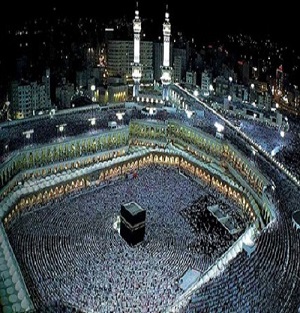
Makkah is regarded the holiest city in the religion of Islam and a pilgrimage to it known as the Hajj is obligatory for all able Muslims. Makkah is home to the Kaaba, by majority description Islam's holiest site,being the direction of Muslim prayer. Makkah was long ruled by Muhammad's descendants, the sharifs, acting either independent rulers orvassals to larger polities. It was conquered by Ibn Saud in 1925. In its modern period, Mecca has seen tremendous expansion in size and infrastructure, home to structures such the Abraj Al Bait, also known as the Makkah Royal Clock Tower Hotel, the world's third tallest building and the building with the largest amount of floor area. During this expansion, Makkah has lost some historical structures and archaeological sites, such the AjyadFortress Today, more than 15 million Muslims visit Makkah annually, including several million during the few days of the Hajj. As a result, Makkah has become one of the most diverse cities in the Muslim world, despite the fact that non-Muslims are prohibited from entering the city.
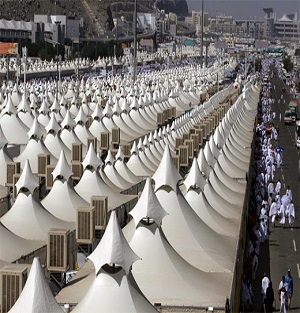
Mina is a valley 5 km towards East of Makkah. During Hajj, the pilgrims stay in this valley on 8th of Dhul Hajj and then on 10th to 13th of Dhul Hajj.
Mina is best known for the role it plays during the annual Hajj pilgrimage also knownthe “tent city” . More than 100,000 air-conditioned tents provide temporary accommodation to visiting pilgrims. In the valley of Mina is the Jamarat Bridge, the location of the ritual of the Stoning of the shatan, performed between sunrise and sunset on the last day of the Hajj. Mina is the place where pilgrims throw stones, commemorating the occasion that the Prophet Ibrâhîm stoned the shatan that came between him and the commandAllah had set him.
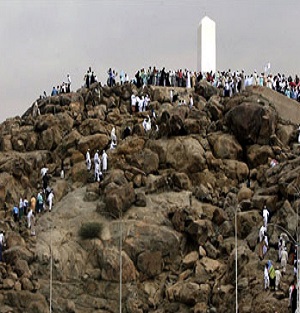
Arafa’ or Arafat is a valley about 20 km outside Makkah. On the 9th of Dhulhaj, it is mandatory for all the pilgrims to reach and stay in the valley of Arafa’ and spend the day in making dua’s, doing dhikr and forgiveness for all their sins from Allah; failing which can invalidate their hajj. JabalurRahamah or the Mount of Mercy is a mountain in the valley of Arafat. It is about 70 m high. Our Prophet SAW stayed on this mountain and made waqoof. Masjid e Nimra is a beautiful mosque. Two thirds of this mosque lie in the valley of Arafat while one third in the valley of Nimra and the valley of Urana’. Nowadays, the Sermon of Hajj is delivered in Masjid e Nimra. Our Prophet (peace and blessings of Allah be on him) delivered the Sermon of Hajj while sitting on his camel (Quswa) in the valley of Urana’.It is mandatory for the pilgrims to offer Qsr and combined prayers of Dhur and Madinar after the Sermon of Hajj in or around Masjid e Nimra, and then reach the valley of Arafat and make waqoof there, spending their time in making dua’s, dhikr and Madinah king for forgiveness.
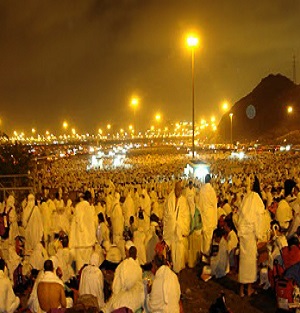
Muzdalifah is situated in the province of Makkah.The pilgrims travel from Mina to Arafat on the 9th of DhulHijjah. They spend the whole day at Arafat and after sunset, they leave for Muzdalifah without offering the Maghrib prayer, all the while reciting talbiyah. When pilgrims reach Muzdalifah, they can stay where ever they are. At Muzdalifah, the pilgrims sleep in open air and wake up early for fajr prayer just after Subh’ Sadiq. There is hill in Muzdalifah known “Mashar-ul-Haram”. It also has a mosque built on it. It is masnoon to make dua near Mashar-ul-Haram while facing Qibla. Nowadays, the starting and ending boundary lines for Muzdalifah have been highlighted properly so that the pilgrims know the area in which they are required to spend the night and to make duas. According to one hadith narrated by Arwa (RA), anyone who is able to offer fajrsalah in Muzdalifah, has accomplished his Waqoof-e-Muzdalifah. Soon after fajr prayer, the pilgrims leave for Mina. For the very old,sick or children, it is allowed to leave Muzdalifah after the moon sets down, before the time of Fajr prayer starts. Usually the pilgrims collect pebbles for stoning the Jamarat at Muzdalifah. However, the pebbles for Our Prophet (peace and blessings of Allah be on him) were collected by Ibn Abbas (RA) from Mina.
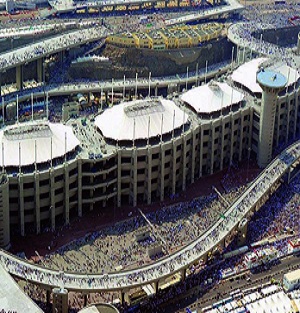
The jamarat or stoning the Shaitan (devil) is an important part of Hajj. Jamarat were at first three tall pillars in Mina, but since 2004, they have been replaced by high walls to avoid accidents. Moreover a (one way)bridge has been made to make it easy for the Hujjaj (pilgrims) to pelt the Jamarat either from the bridge or from the ground. The three walls or Jamarat are named ; Jamarah-al-Oola or Jamarah-e-Sughra (meaning the first or the small Jamarah), Jamarah-al-Wusta (meaning the middle Jamarah) and Jamarah-al-Uqbah or Jamarah-al Kubra ( meaning the last or the largest Jamarah).
Haj is an Ibadah that is a collection of rituals that commemorate the Sunnahs of Ibraheem (AS) and his family. Pelting the Jamarat represents the steadfastness of Ibraheem (AS) and Isma’eel (AS).
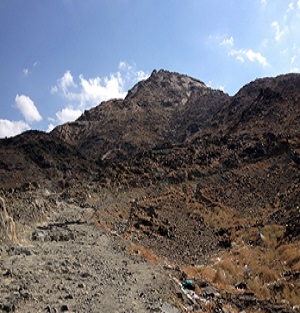
When the Prophet (s.a.w.) and Abu Bakr (r.a.) arrived at the cave on Mount Thawr, Abu Bakr (r.a.) entered first to clear away anything that might injure the Prophet (s.a.w.). He found a few holes and stuffed them with pieces of cloth. The Prophet (s.a.w.) then entered and went to sleep on Abu Bakr(r.a.)’s lap. Suddenly , something stung Abu Bakr(r.a.)’s foot, but he did not twitch, fearing he would wake the Prophet (s.a.w.). The pain was so intense that tears began to run down his cheeks and onto the Prophet (s.a.w)’s face. The Prophet (s.a.w.) woke up and saw that Abu Bakr (r.a.) was in pain. He applied his spittle on the injury and the pain disappeared.
For three consecutive nights the Prophet (s.a.w.) and Abu Bakr (r.a.) remained hidden in the cave. During this period, Abu Bakr (r.a.)’s son, Abdullah, would pass his nights nearby. The young man would return to Makkah very early in the morning so that the Quraysh had no idea that he had slept elsewhere. Each day in Makkah he collected information about the activities of the Quraysh, and each night went back to Jabl Thawr to inform the Prophet (s.a.w) and his father Abu Bakr (r.a.).
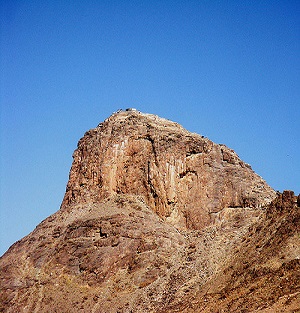
It was here that the Prophet Muhammad (s.a.w.) received the first revelations of the Holy Quran during the month of Ramadhan in 610 CE. The mountain is also known Madinah Jabal Noor (the mountain of light).
The Prophet (s.a.w.) first began to have revelations in the form of good dreams which came true. Then he began to like solitude. He would go to the cave of Hira and meditate there in solitude for a number of days and nights. He would take provisions with him to stay for an extended period, and when he returned to Khadeejah (r.a.), he would stock up again and go back to the cave. This was his practice until Truth was revealed to him by an angel while he was in the cave of Hira.
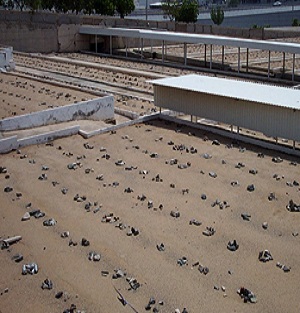
Several members of the Prophet (s.a.w.)’s family and many Sahabah (r.a.) are buried here. The following personalities are buried in this graveyard:
Ummul Mu’mineen Khadeejah (r.a.), the first wife of the Prophet (s.a.w.)
Qasim, the eldest son of the Prophet (s.a.w.) from his wife Khadija (r.a.); he died in infancy.
Abdullah, the second son of the Prophet (s.a.w.) from his wife Khadija (r.a.); he was also known Madinah Tahir and Tayyab.
Abu Talib – the uncle of the Prophet (s.a.w.)
Abdul Muttalib – the grandfather of the Prophet (s.a.w.)
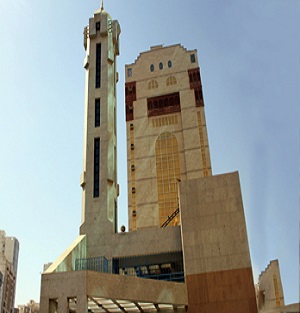
Masjid Jinn built on the place where the Prophet (s.a.w.) drew a line for Abdullah bin Mas’ood (r.a.) who had accompanied him after he had been commanded to recite the Qur’an to the Jinn.:
Abdullah bin Mas’ood (r.a.) narrates, “While in Makkah, the Prophet (s.a.w.) once said to the Sahabah (r.a.), “Whoever wishes to see what the Jinn are all about should come along.” Besides myself no-one else came. When we reached the place in the Ma’la district of Makkah the Prophet (s.a.w.) used his foot to draw a circle on the ground. He then instructed me to sit inside the circle. After proceeding a little further, the Prophet (s.a.w.) started reciting the Qur’an. It then happened that Jinn started to arrive in troops they gathered there. So many came that I could not even see the Prophet (s.a.w.) nor hear him. The Prophet (s.a.w.) then continued talking with a group of them until Fajr, when he came back to me saying, “ I have given them bones and dung their provisions so you people should ensure that you never use bones and dung to clean yourselves after relieving yourselves.
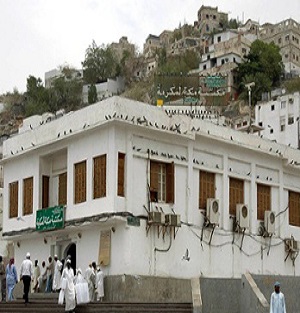
No one can deny that the birth of the last Messenger of Allah, Prophet Muhammad (SAW) was an incident that influenced the entire human race, whether Muslim or not. Many non Muslims consider him a person who greatly influenced the history. In his book, The 100: A ranking of the most influential persons in history, the author Micheal H.Hart placed our Prophet Muhammad (SAW) in the first place because he believes Prophet Muhammad (SAW) was “supremely successful in both the religious and secular realms".
The Muslims made a strong effort to preserve every tiny detail of the life of our Prophet Muhammad (SAW). His words and actions were recorded hadith and sunnah, his biography seerah. Even his (SAW) ancestry can be traced back to Prophet Ibraheem (AS) and in some books, even to Prophet Adam (AS).
.jpg)
It's one of the valleys in Makkah . Nowadays it is full of buildings. Today, this name has been limited to a well in Jarwal, named Tuwa, in which the prophet had spent night in. Then, in the morning, he washed from its water and entered Mecca, interpreted by Al-Bukhari. It is located at the bottom of Makkah at the north direction in Jarwal. The word" Tuwa" means the pleated well.
This is a well in Makkah where the Prophet (pbuh) stopped when he performed Hajj. The Prophet (pbuh) also bathed in the water of this well. ‘Abdullah bin Zubayr narrates that the Prophet (pbuh) said a thousand prophets from the Bani Isra’il tied their mounts at Tuwa and bathed in its water. It is also narrated that the Prophet (pbuh) spent the night at this location during the Conquest of Makkah. The next day, the Muslim army was separated into two camps; one under Khalid bin Walid entered Makkahfrom what is today Khalid bin Walid Road and the other group, led by the Prophet (pbuh), entered Makkah from the Kudai side. ‘Abdullah bin ‘Umar would always spend the night at this location when he entered Makkah. Al-Zaraqi said that Zubaydah, the wife of Harun al-Rashid, built a mosque at this location.
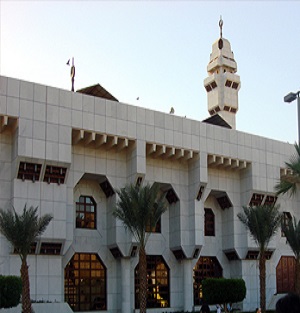
The masjid lies 7.5 km south from Makkah on the road to Madinah and is the closest of all the boundary points (miqat).
Masjid Aisha, also known Masjid at-Tan’eem marks the place where Ummul-Mu’mineen Aisha (may Allah be pleased with her) went to enter into Ihram for Umrah when the Prophet (peace and blessings of Allah be on him) told her to do so during the farewell Hajj. The masjid lies 7.5 km south from Makkah on the road to Madinah and is the closest of all the boundary points.
Jaabir (may Allah be pleased with him) reports that because Aisha (may Allah be pleased with her) was experiencing menstrual cycle the Prophet (peace and blessings of Allah be on him instructed her to perform all the various rites of Hajj except for the tawaf. She then performed the tawaaf after her cycle had ended. She then said, “O Rasulullah (peace and blessings of Allah be on him)! While you have performed Hajj and Umrah, I have performed only Hajj.” The Prophet (peace and blessings of Allah be on him) then instructed her brother Abdur-Rahman (may Allah be pleased with him) to take her to Tan’eem and it was from there that she performed her Umrah after her Hajj during the month of Dhul Hijjah.
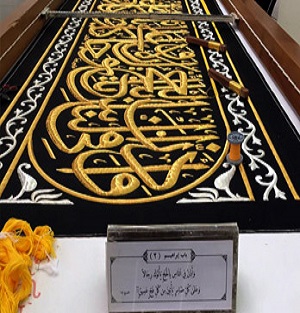
The covering of the Holy Kaba is known as the kiswa, and it is one of the most important signs of respect and veneration for the House of God, and its history is part of the history of the Holy Kaba itself.
Since the Kaba was first built by Abraham and his son Ismail, the kiswa passed through many stages, and it was not always as we see it today.
Throughout its long history, the form and design of the kiswa were the result of numerous social and economic factors related to particular historical periods.
Nevertheless, the common factor has always been veneration for the House of God, even in the pre-Islamic period.
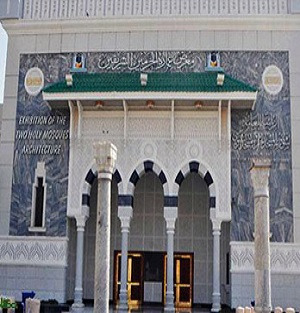
An exhibition of the Two Holy Mosques’ architecture and relics, in a museum nestled amid the hills of Makkah’s Umm Al-Joud area, not far from the Kiswa factory, has a treasure trove of items dating back hundreds of years.
Some of the most venerable pieces are doors of the Kaaba replaced during various renovations.
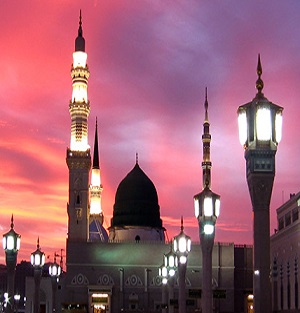
Medina Arabic: المدينة المنورة, al-Madīnah al-Munawwarah, "the radiant city"; or المدينة, al-Madīnah, "the city"), also transliterated Madinah. Madīnah, is a city in the Hejaz, and the capital of the Al Madinah Region of Saudi Arabia. The city contains al-Masjid an-Nabawi ("the Prophet's Mosque"), which is the burial place of the Islamic prophet Muhammad, and is the second-holiest city in Islam after Mecca.
Medina was Prophet Muhammad's destination after his Hijrah from Mecca, and became the capital of a rapidly increasing Muslim Empire, first under Muhammad's leadership, and then under the first four Rashidun caliphs Abu Bakr, Umar, Usman, and Ali. It served Madinah the power base of Islam in its first century where the early Muslim community developed. Medina is home to the three oldest mosques, namely the Quba Mosque, al-Masjid an-Nabawi, and Masjid al-Qiblatayn ("the mosque of the two qiblas"). Muslims believe that the chronologically final surahs of the Quran were revealed to the Prophet in Medina, and are calledMedinan surahs in contrast to the earlier Meccan surahs.[3][4]
Similar to Mecca, non-Muslims are forbidden from entering the sacred core of Medina (but not the entire city) or the city center by the national government.
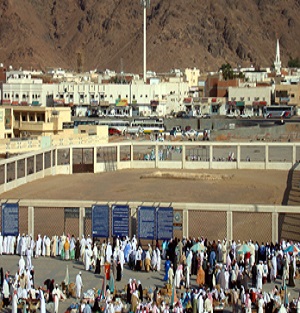
The Ghazwah of Uhud was the second major battle between Muslims and non believers of Makkah and was fought in third year of hijrah.
The defeat in the Ghazwah of Badr was unexpected for the Non believers of Makkah and particularly the tribe of Quraish; it was a severe blow to their pride but even more important than that was their tradition of avenging their dead. According to their tradition, there could be no peace of heart until the dead were avenged. Hind, the wife of Abu Sufyan, the leader of Quraish, had lost many dear ones in the Ghazwah of Badr, particularly by Hamza bin Abdul Muttalib(RA), uncle of our beloved Prophet (SAW), who was a remarkable huntsman and fighter. She was burning in the fire of revenge. Once she saw a slave, Wehshi, displaying his amazing skills of javelin. She promised to set him free if he would kill Hamza (RA).
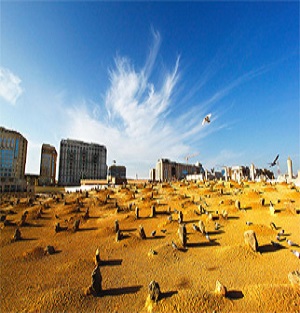
The chief graveyard of Madinah is known as “Jannah tul Baqee” or “Maqbaratul Baqee”. It enjoys the status of being the first Muslim graveyard of Madinah. Several family members of our beloved Prophet (SAW) have been buried in this graveyard. Maqbaratul Baqee is the final resting place of several thousand Sahabah (Companions of Our Prophet [SAW]), too. Many other well known devout Muslims have the honor of being buried here, too.
The site for graveyard was selected by Our Prophet (SAW) himself soon after he migrated to Madinah when one of his Ansar Sahabah, As ‘ad Bin Zararah (RA) passed away. The graveyard was close to the Masjid-e-Nabwi. At that time, the ground of the graveyard was completely covered with a thorny bush called “Gharqad” in Arabic. Thus, the graveyard was called “Baqee ul Gharqad”, which means the land of Gharqad. Later, it got famous by the name of “Jannah tul Baqee” or “Maqbaratul tul Baqee”.
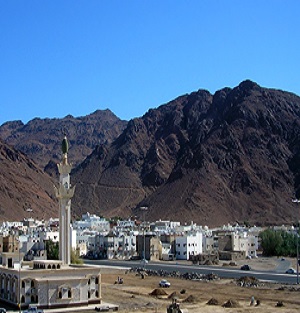
After the humiliating defeat in the Battle of Badr a year earlier, the Quraysh of Makkah made preparations to muster a great army to fight the Muslims again and take revenge. They assembled an army of 3000 soldiers with 300 camels, 200 horses and 700 coats of mail. Wives and daughters of slained chiefs in Badr accompanied the army to see with their own eyes the spectacle of the killers being killed. Hind, the daughter of Utbah was the leader of the womens section and her husband Abu Sufyan was the commander-in-chief of the Makkan army. Both were not Muslims at the time but bitter enemies of Islam. The left and right flanks were commanded by Ikrimah ibn Abi Jahl and Khalid bin Waleed respectively. Amr ibn al-As was named the commander of cavalry and his task was to co-ordinate attack between the cavalry wings.
(All three subsequently became Muslims and become great generals of Islam).
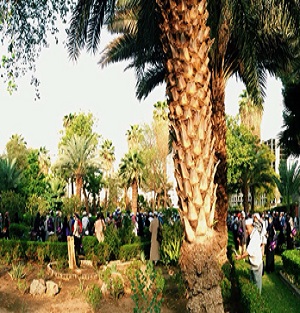
The name of the house is used as shorthand for the event, or the gathering, which was a crucial turning point in the history of Islam. On the day the Prophet Mohammad (saw) died
(June 8, 632 CE), the "Ansar" gathered in the Saqifah to discuss the future and leadership of the Muslims.
There were two Ansar tribes, the Khazraj and the Aws; both were present. However, the Muhajirun (emigrants) from Makkah, had not been notified of the gathering. When the Prophet (SAW)'s companions, Abu Bakr (ra) and Umar (ra), learned of the gathering, they rushed to the meeting. After a tumultuous debate, the details of which are highly contested, those who gathered there gave their allegiance, or bay'ah, to Abu Bakr as the new leader of the Islamic community.
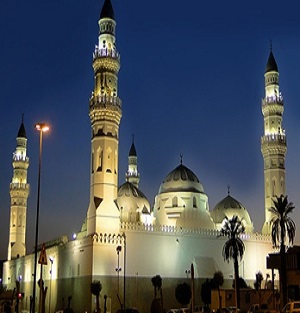
Quba is the place on the outskirts of Madinah where the Prophet (peace and blessings of Allah be on him), accompanied by Abu Bakr (may Allah be pleased with him) arrived and first stayed after emigrating from Makkah. They arrived on Monday 12th Rab’i al-Awwal, fourteen years after Prophethood and this date marks the beginning of the Islamic calendar (Hijra), (16th July 622 CE). A masjid was established here by the Prophet (peace and blessings of Allah be on him), the first to be built in Islam.
1- The virtue of Masjid Qubas is mentioned in the following Quranic verse in Surah Taubah: “…certainly a masjid founded on piety from the very first day is more deserving that you should stand in it…” [9:108]
2- The Prophet (peace and blessings of Allah be on him) said: “He who purifies himself at his home and comes to Masjid Quba and offers two rakats therein, will be rewarded the reward of an Umrah (lesser pilgrimage).” [Sunan ibn Majah]
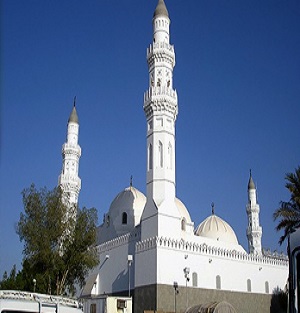
Masjidul Qiblatain is historically important to Muslims as this is where in Rajjab 2 AH the revelation of the Holy Quran came to change the direction of the qibla from Bait-al-Maqdis in Jerusalem to the Ka’bah in Makkah..
During his time in Makkah, the Prophet Muhammed (s.a.w.) used to pray towards Bait-al-Maqdis, with the Ka’bah in front of him. When he migrated to Madinah, he prayed towards Jerusalem for 16 months, but he hoped it would be changed to the Ka’bah.
During Dhuhr prayer or it was said that it was Asr, the Prophet (s.a.w.) had led his Companions in praying two rak’ahs , when he was commanded to face towards the Ka’bah by the following revelation in the Quran in Surah al-Baqarah:
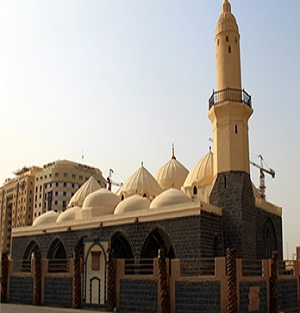
Masjid Al Ghamama is built on the site where the Prophet (s.a.w.) performed the Eid salah during the last years of his life
This masjid is also known as Masjid Al Eid. According to some reports the Prophet (s.a.w.) performed the Eid salah here during the last four years of his life.
This is also the location where the Prophet (s.a.w.) performed Salatul Istiskah (a special salah for invocation of rain). The word Al Ghamama means clouds which suddenly appeared and brought rain after the Prophet (s.a.w.) has performed the prayer.
According to some reports this was also the spot (or close to this area) where the Prophet (s.a.w.) performed the Janaza (funeral) prayer of Najashi, the Emperor of Aksum in Abbyssinia (Ethiopia). Najashi, although being a Christian, had welcomed the groups of Muslims who had migrated to his country in order to escape the persecution of the Quraysh and later on accepted Islam. When however he passed away, there was nobody to lead the funeral prayers and so the Prophet (s.a.w.) prayed his Janazah salah, the only time ever he did so in the absence of the actual body.
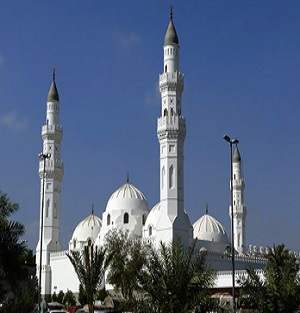
The significance of Masjidul Ejabah (also known as Masjidl Mu’awiyah) is that it is the location where the Prophet (s.a.w.) supplicated to Allah (SWT) three times with Allah (SWT) answering two of his requests, but forbidding the third. The Arabic word ‘ejabah’ in english closely means ‘responding’.
Aamir bin Sa’ad (r.a.) reported on the authority of his father that: One day Allah’s Messenger (s.a.w.) came from Aaliya and passed by the mosque of Banu Mu’awiyah. He went in and observed two rak’ahs there and we also observed prayer along with him and he made a long supplication to his Lord. He then turned to us and said:
“I asked my Lord three things and He has granted me two but has withheld one. I asked my Lord that my Ummah should not be destroyed by through famine and He granted me this. And I asked my Lord that my Ummah should not be destroyed by drowning (by deluge) and He granted me this. And I asked my Lord that there should be no bloodshed among the people of my Ummah, but He did not grant it.” [Muslim] –
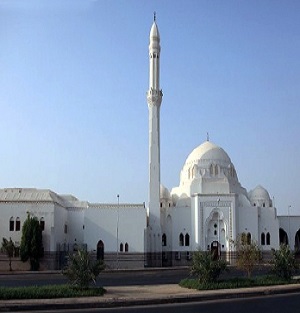
The Prophet (s.a.w.) left Quba on a Friday to head into Madinah. About a kilometer from Quba he passed the village of Banu Salim bin Auf. The people of Banu Salim implored: “O Prophet of Allah, you stayed at the homes of our cousins for a number of days, reward us too with something, for they will pride themselves over us till the Day of Judgement that you stayed with them”. The Prophet (s.a.w.) dismounted and offered his first Jummah in their locality.
Approximately one hundred Muslims participated in this first Jummah salah. Amongst them were the Prophet’s (s.a.w.) relatives from Bani an-Najjar who had come to meet him and some from Bani Amr who had escorted him from Quba.
After performing the Friday prayer, the Prophet (s.a.w.) mounted Qaswa (his camel) and set off for the city of Madinah.
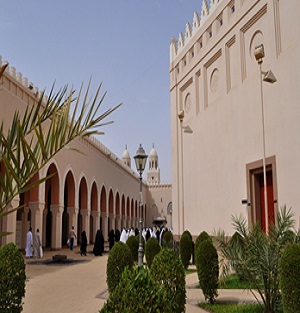
It is the place where pilgrims coming from Madinah wishing to perform Umrah or Hajj enter into ihram before they set for Makkah.
It was first built during the time of Umar bin Abdul Aziz as governor of Al-Madinah (87-93 A.H./706-712 A.D.) and renovated several times afterwards, the last of which was during the time of the Custodian of the Two Holy Mosques, King Fahd bin Abdul Aziz, who ordered its area to be increased several times and to be provided with necessary facilities.
The mosque was built in the shape of a square on an area of 6000 m². It consists of two sets of galleries separated by a wide yard of 1000 m². The galleries are shaped as arches ending with long domes. The mosque has a distinct minaret, square at the bottom but round at the top in a diagonal shape. It rises to a hight of 64 m.
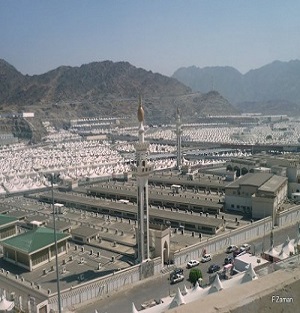
Masjid al-Khayf (Arabic: مسجد الخيف) is located near the smallest Jamarat at the base of the mountain in the south of Mina and is considered the most important mosque in this area. It is here that the Prophet ﷺ and 70 other prophets before him had performed Salah.
For reference click Here